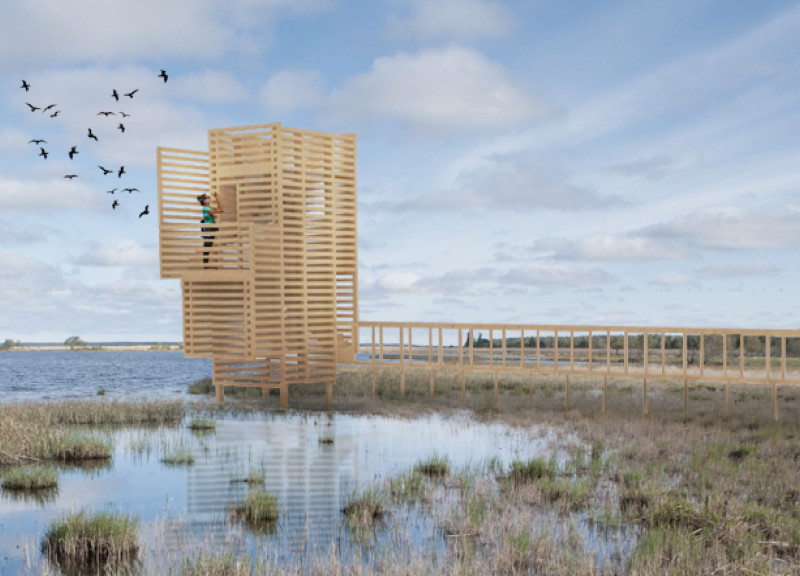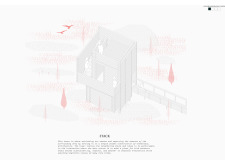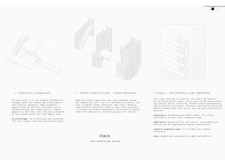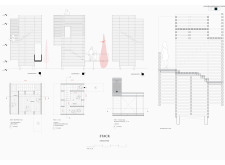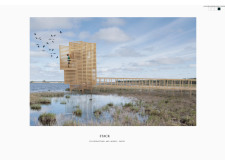5 key facts about this project
# Analytical Report on the "Stack" Project: Pape Bird Observatory Tower
## Overview
The Pape Bird Observatory Tower, known as "Stack," is situated within a wetlands area of the Pape region, recognized for its rich avifauna. The design aims to enhance the birdwatching experience by creating an engaging and accessible environment that integrates architectural elements with the natural landscape. Its intent is to foster a deeper appreciation for nature through education and observation, encouraging users to connect with the surrounding ecosystems.
## Spatial Strategy and User Interaction
The design features a series of vertically stacked, modular units that promote air and light flow, reflecting a nest-like configuration. This arrangement enhances both the aesthetic and functional qualities of the structure, allowing for various vantage points at different levels. The observatory includes multiple platforms that extend into the natural setting, providing unique interaction opportunities with the environment. The main tower facilitates elevated views for visitors, while lower platforms create quieter niches for observation, minimizing disturbances to wildlife.
## Sustainable Materiality and Climate Consideration
Sustainability is a core principle of the design, emphasizing the use of locally sourced timber, specifically pine and spruce. These materials offer structural strength while ensuring minimal environmental impact. The design employs standard timber beams (95 mm x 95 mm) to streamline construction and economical feasibility, alongside a protective oil finish for enhanced weather resistance. This choice reflects a commitment to climate responsibility, as wood boasts a lower embodied energy and carbon footprint compared to alternative materials, ultimately integrating harmoniously with the surrounding ecosystem.
The accessibility framework includes narrow pathways that enhance user experience while promoting a sense of discovery through the landscape. These pathways enable visitors to navigate the site and connect with nature, facilitating an interactive observation journey that engages both the environment and the avian community. The overall circulation strategy ensures that the experience remains dynamic, providing opportunities for surprise encounters with wildlife and varied landscape features throughout the visit.


